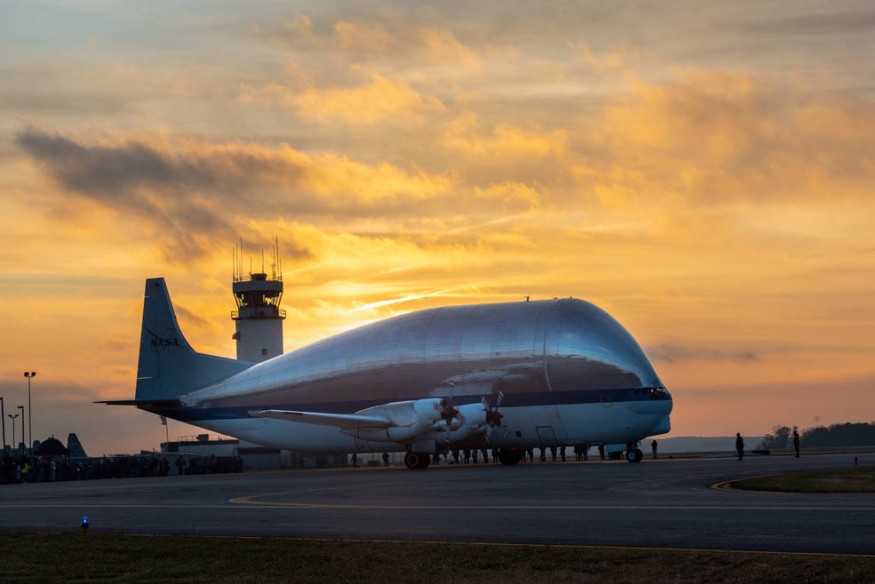
The National Aeronautics and Space Administration was successful in transporting its next-generation passenger spacecraft to Ohio.
BUT FIRST, WHAT IS SUPER GUPPY?
Formerly known as the "pregnant guppy," the Super Guppy was developed by Aero Spacelines as a solution to transporting oversized cargo, which proves to be difficult due to the logistical limitations of railroads.
The Super Guppy first took its first flight on September 19, 1962, where most of the observers are cynical if it can successfully fly while being that bulky. But Super Guppy proved his cynics wrong when it flew smoothly while being controlled by former US Air Force pilot Jack Conroy.
Super Guppy is a massive aircraft. Its cargo area alone measures 25 feet in diameter and 111 feet in length. The aircraft will be able to effortlessly insert big cargos through its unique hinged nose that can open in 110 degrees -- this permits full-frontal cargo loading. The aircraft is designed with a control lock and a disconnect system, which allows the nose to be opened and closed without disturbing the flight and engine control.
This massive aircraft allows a crew of four people inside to man the flight. With a wingspan of 156 feet and 3 inches and a height that measures 46 feet and 5 inches along with an empty weight of 101,500 pounds and flies at 250 miles per hour, it is no wonder why NASA chose the Super Guppy to transport the Orion spacecraft to a facility in Ohio.
THE ARTEMIS MISSION
NASA plans to have a lunar mission by the year 2024 that will bring people -- including the first woman -- on the moon through the Artemis mission. The Artemis mission will serve as some sort of testing ground for new technologies and development that will help astronauts in their future missions to Mars.
The Artemis mission is gearing up for its first lunar mission through the development of the Orion spacecraft, which was delivered from NASA's Kennedy Space Center in Florida for testing at NASA's Plum Brook Station in Ohio. The Super Guppy delivered the gigantic Orion spacecraft and arrived at the Mansfield Lahm Airport on November 24.
The Orion spacecraft's new capsule is engineered to take astronauts to deep space and within the vicinity of the moon. According to NASA, the first flight of the Orion spacecraft will be an uncrewed mission which will take place next year. The spacecraft will be launched out of the planet's atmosphere using the new rocket called the Space Launch System. In this mission, the Orion spacecraft will spend three weeks orbiting the moon.
Engineers at NASA are putting the Orion spacecraft through a series of rigorous tests in order for them to see whether or not the spacecraft is ready. Inside NASA's Plum Brook Station, the Orion spacecraft will be subjected to testing under extreme temperatures. The spacecraft will be placed inside a large vacuum chamber where it will be exposed to temperatures as low as -250 degrees Fahrenheit to temperatures as high as 300 degrees Fahrenheit. This is used as a simulation of the wide range of environments that it will experience in outer space.
Orion spacecraft's electrical components are also tested in the facility to avoid malfunction. After the testing, the Orion spacecraft will again be loaded on the Super Guppy to be transported back to the Kennedy Space Center in Florida, where it will be installed on top of the Space Launch System.
However, although NASA has already given a schedule on the launching of the Orion spacecraft, a recent government audit is not allowing the launch to push through until 2021.










